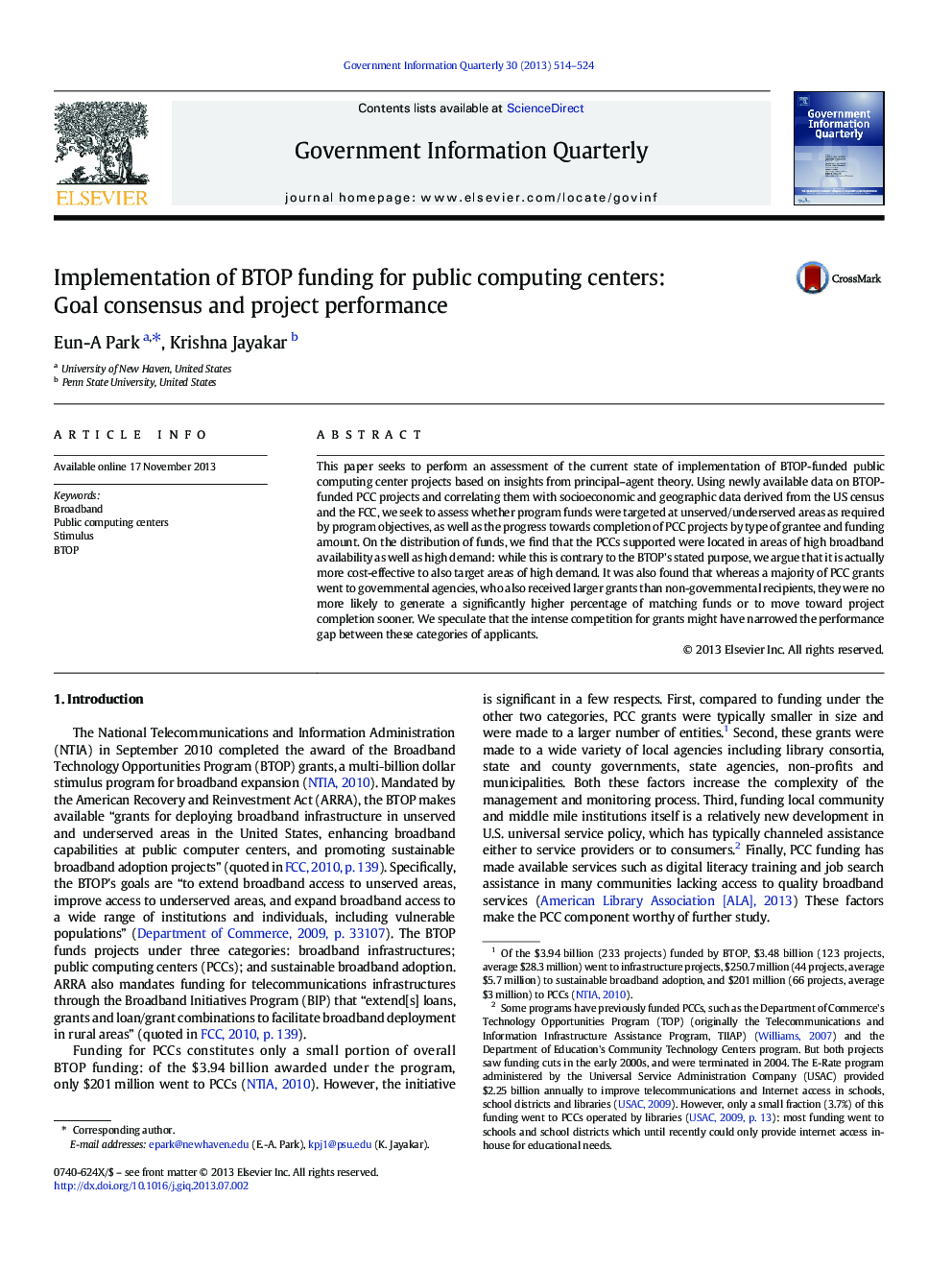| Article ID | Journal | Published Year | Pages | File Type |
|---|---|---|---|---|
| 1024324 | Government Information Quarterly | 2013 | 11 Pages |
•Paper studied funding patterns in the Broadband Technology Opportunities Program.•Funds for public computing centers went to areas with high user demand.•Non-governmental agencies had as much matching funds as governmental recipients.•Progress toward project completion was the same for both categories of recipients.
This paper seeks to perform an assessment of the current state of implementation of BTOP-funded public computing center projects based on insights from principal–agent theory. Using newly available data on BTOP-funded PCC projects and correlating them with socioeconomic and geographic data derived from the US census and the FCC, we seek to assess whether program funds were targeted at unserved/underserved areas as required by program objectives, as well as the progress towards completion of PCC projects by type of grantee and funding amount. On the distribution of funds, we find that the PCCs supported were located in areas of high broadband availability as well as high demand: while this is contrary to the BTOP's stated purpose, we argue that it is actually more cost-effective to also target areas of high demand. It was also found that whereas a majority of PCC grants went to governmental agencies, who also received larger grants than non-governmental recipients, they were no more likely to generate a significantly higher percentage of matching funds or to move toward project completion sooner. We speculate that the intense competition for grants might have narrowed the performance gap between these categories of applicants.
